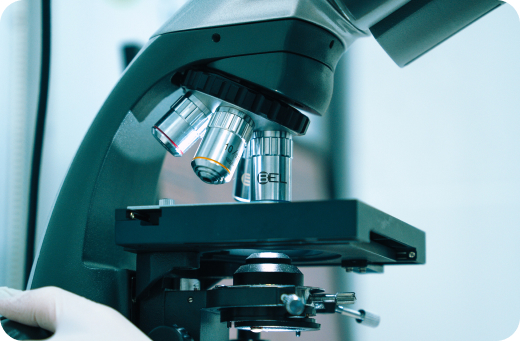Project
AE-001
AE-001 is the original world’s first candidate for effective treatment of food allergies.
Project Goal
The aim of the project is to treat food allergies. In every population, some individuals experience an abnormal, often recurring reaction to ingested food, which is normally tolerated by healthy individuals. According to the current terminology of the European Academy of Allergology and Clinical Immunology (EAACI), such a reaction to ingested food is a manifestation of the body’s hypersensitivity, and the clinical symptoms are an expression of this hypersensitivity, which is divided into immunologic and non-immunologic. Food hypersensitivity caused by an IgE-mediated immune response is known as food allergy.
Project Assumptions
From the project’s perspective, which involves developing the world’s first drug for food allergies, the IgE-mediated mechanism is significant, affecting approximately 50% of individuals with various food intolerances.
Project carried out in cooperation with the University of Warsaw.

Project carried out in cooperation with the University of Warsaw and the Center for Technology and Knowledge Transfer.

Allergic diseases:
Allergic diseases are increasingly diagnosed in industrialized countries worldwide, and their incidence continues to rise, currently referred to as the “21st-century epidemic.” Physicians first encounter food hypersensitivity in young children, estimated to affect around 8% of young children, usually triggered by a reaction to cow’s milk proteins. This frequency decreases during school-age to about 4%. In adults, the prevalence of food hypersensitivity to various foods is estimated to be around 3.5 – 4%.

What causes allergic diseases:
The most important group of food products causing food allergies include: cow’s milk proteins, egg proteins, fish, shellfish, mollusks, nuts, soy, and wheat. Consumption of such products by individuals reacting differently to food qualitatively leads to the development of the body’s hypersensitivity. This reaction can occur and clinically manifest at any age. When delving into the essence of the development of the allergic process and the pathogenetic mechanisms triggered by the consumption of harmful food, it should be noted that two phenomena underlie the process of allergic hypersensitivity: sensitization and allergic disease.

Sensitization process:
The sensitization process occurs after the initial contact with an allergen in individuals predisposed to hypersensitivity. This “sensitization” contributes either to the production of IgE in individuals with atopy or a pro-allergic cytokine profile with a predominance of Th2 lymphocytes in allergic individuals. The sensitization process is an immunological phenomenon clinically silent (asymptomatic). Only when a certain group of sensitized individuals undergoes repeated exposure to the allergen and the individually differentiated threshold of tolerance to the harmful antigen is exceeded does the development of allergic disease occur with the manifestation of specific clinical symptoms. The immunological mechanisms most often responsible for the clinical manifestation of food hypersensitivity correspond to the classification established by Gell and Coombs and may have an IgE-dependent, IgE-independent, or mixed character. Based on the literature data, IgE-dependent reactions are observed in approximately 48% of patients, which are typical food allergies. IgE-independent reactions are diagnosed in the remaining patients: type II – in about 6%, type III – in 10%, type IV – in 18% of patients, and a mixed pathogenetic mechanism – in 28%.

Scale of the problem:
POLAND
The estimated population of Poland in 2023 is 37.97 million people. Assuming that approximately 3.5% of the population suffers from various types of food allergies, this means we have 1.33 million affected individuals in Poland. IgE-mediated food allergies affect around 665,000 people.
EUROPEAN UNION
The population of the EU estimated in 2023 is 513.5 million people. Assuming that approximately 3.5% of the population suffers from various types of food allergies, this means we have nearly 18 million affected individuals in the EU. IgE-mediated food allergies affect around 9 million people.
WORLD
The Earth was inhabited by nearly 7.6 billion people in 2023. Assuming again that approximately 3.5% of the population suffers from various types of food allergies, this means the problem of food allergies affects nearly 266 million affected individuals worldwide. IgE-mediated food allergies affect nearly 133 million people on our globe.
Back to project list
Learn more about our ongoing projects and the range of services we offer.
Get in touch with us

